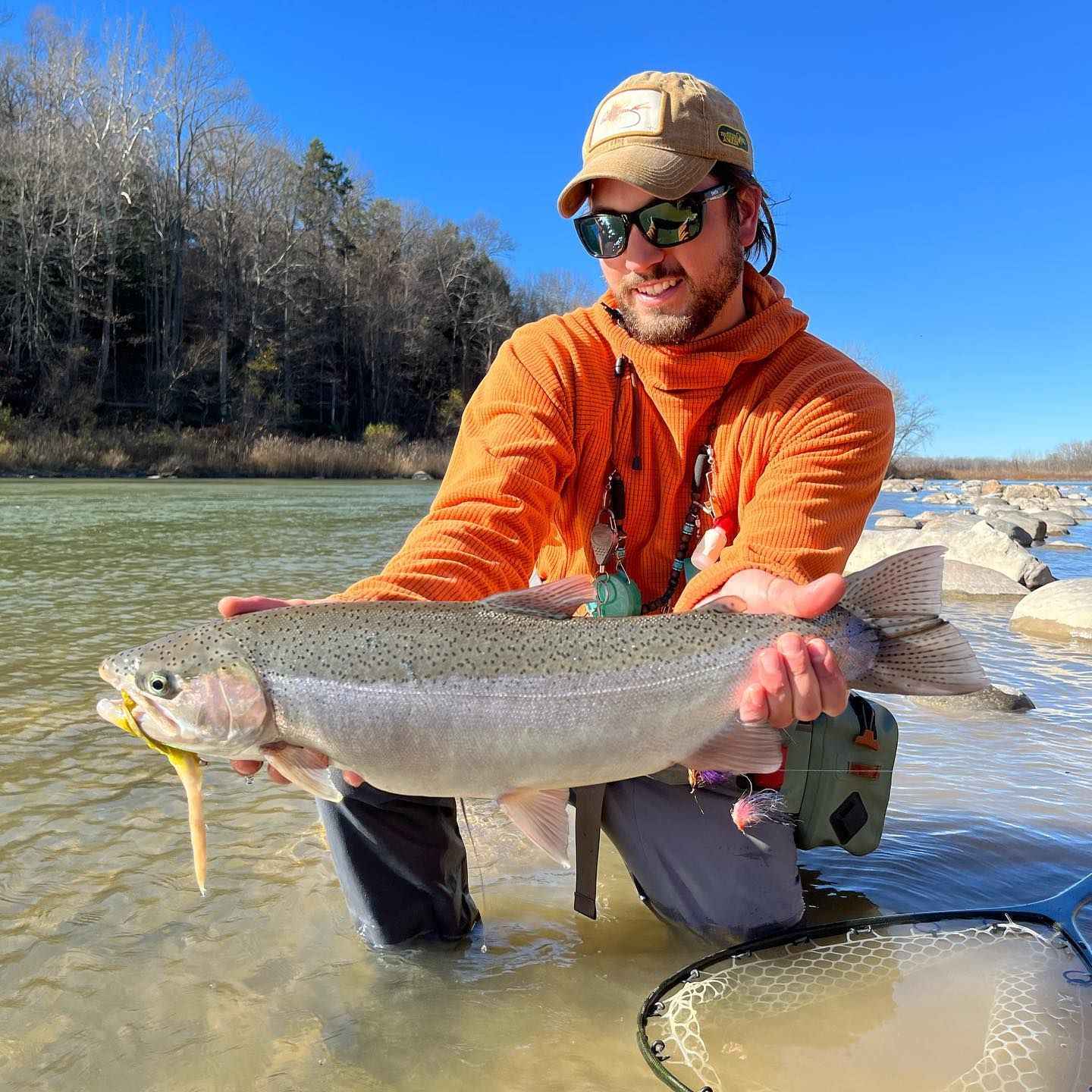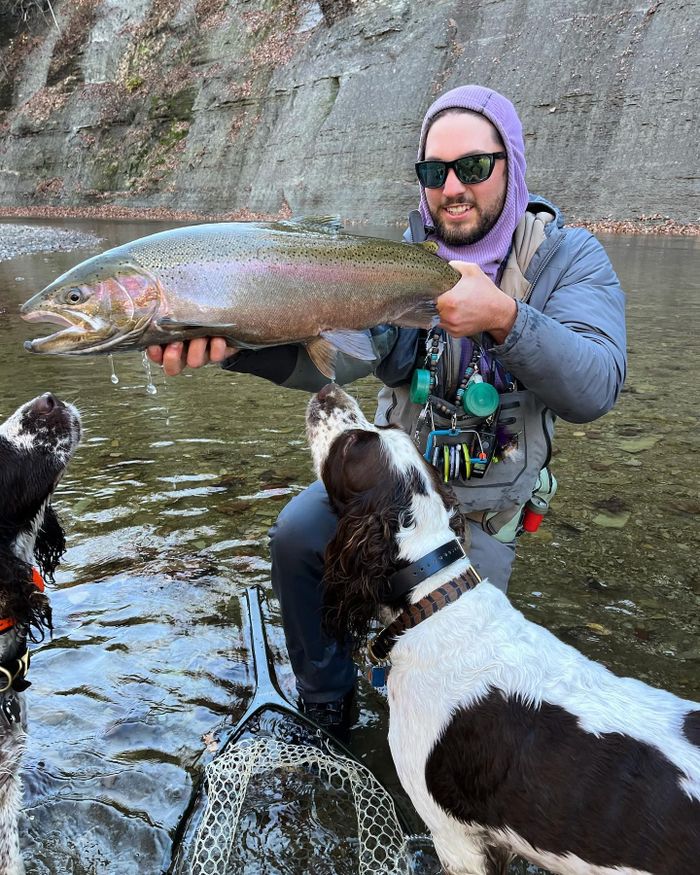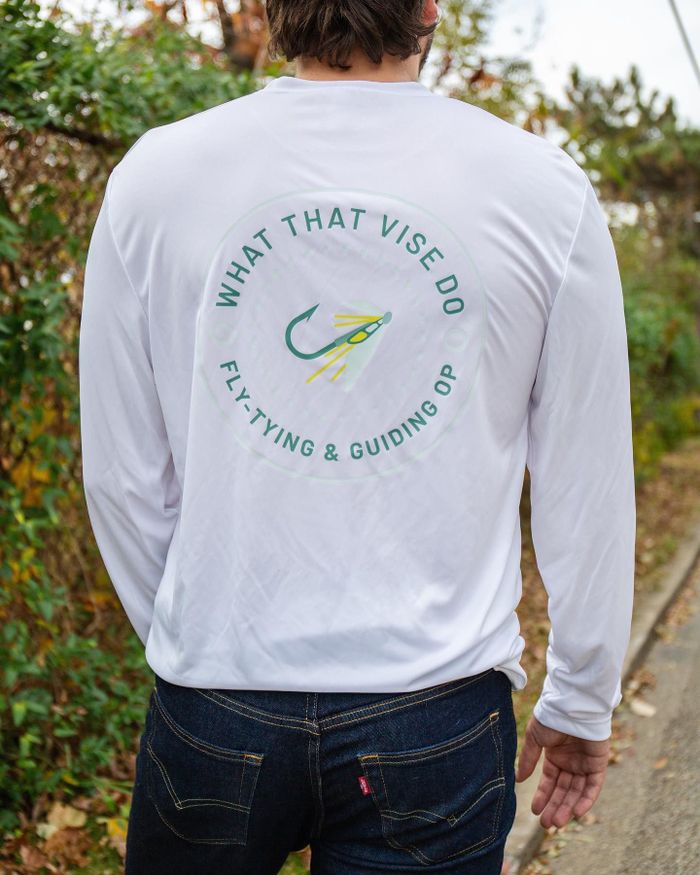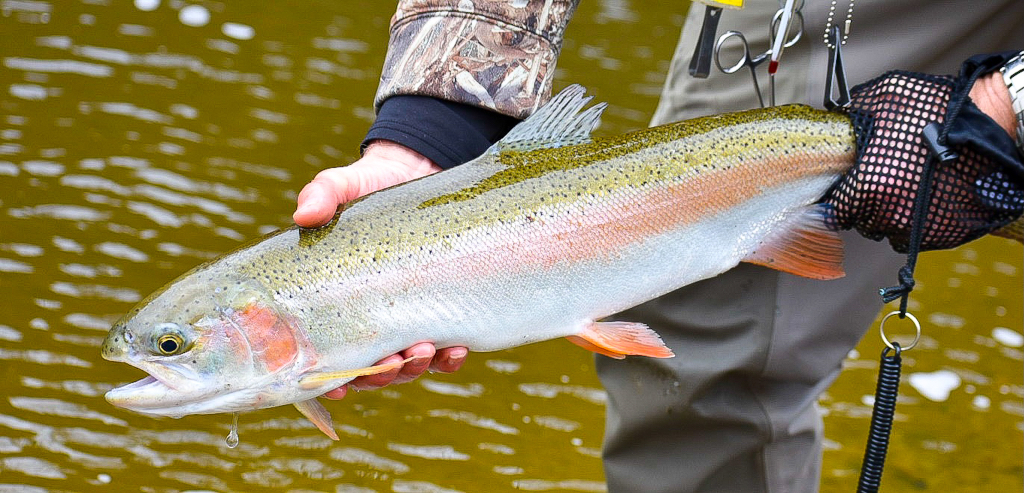Going Above and Beyond with Fishing
As a fishing guide, Captain Lucas recognizes his duty when it comes to conserving bodies of water and shares what his advocacies mean to him.

By Lucas Smith
Making Fishing More Meaningful
At What That Vise Do, capture and release is a nearly rigid requirement because the steelhead trout population has been declining since 1997 in various parts of the world. In 1997, the National Marine Fisheries Service listed the southern steelhead as an endangered species. Admittedly, since I often fish at Steelhead Alley, I apply the "keep them wet" principle to lessen the stress that the fish is experiencing during the catch and set it free after taking a photo.

When fly fishing in Eastern Pennsylvania alone or with customers, I only take a fish out of the water to take a quick photo. Before doing that, I always check first the temperature of the water and the surrounding because steelhead trout are susceptible fish. We also don’t want something bad happening to them because of their decreasing population. Additionally, if the temperature is over 65 degrees Fahrenheit, you shouldn't be removing steelhead or trout from the water.

Instead, if the temperature is over 68 degrees Fahrenheit, you should go for other warm-water species like bass and pike. Although bass will readily bite in water between 61 and 84 degrees Fahrenheit, the optimal temperature range to capture bass consistently is between 74 and 79 degrees Fahrenheit when bass are actively feeding, and midday highs do not force bass into a deep or shaded structure. On the other hand, pikes enjoy 60 to 65 degrees Fahrenheit water and a large habitat range. Although they prefer clearer water, they can tolerate moderate turbidity and endure a wide variety of temperatures.
As an angler and fishing charter, I recognize my responsibility to care for natural bodies of water. The Mayfly Project and Project Healing Waters are the two outstanding organizations I've worked with in the past and intend to work with in the future. So, what are the Mayfly Project and Project Healing Waters? It is a national nonprofit group that uses fly fishing as a motivator to mentor and assist foster kids. The Mayfly Project's mission is to help foster children through fly fishing and introduce them to their local water ecosystems in the hopes that doing so will provide them an opportunity to enjoy themselves, gain self-confidence, and form a deep connection with nature.
I met a lot of great kids along the way while working at The Mayfly Project, and during that time, I saw a glimpse of what I was doing when I was a child—spending time with my family while catching fish along the pond, river, and lake. Not only are you teaching the kids how to fish but also how to take care of the environment they will be living in as part of the future generations to come.

A quote from a caseworker answers the question, “How can fly fishing improve the life of a child in foster care?” during a project outing, and I quote, “I couldn’t believe the change in behavior and spirit prior to our outing with TMP and then post outing-it was night and day. The children came feeling nervous and struggling to stay positive, and then once they started participating in the project, their behavior and attitude changed. Seeing the children smiling, feeling good about their accomplishments and themselves, enjoying time in nature, and excited about life, was worth more than we could have ever expected.”
The work of The Mayfly Project includes Mentoring and Conservation. Because we believe foster children enjoy time spent with their mentors and it's the most effective approach to teach fly fishing, The Mayfly Project is dedicated to maintaining our 1:1 mentor ratio when working with these kids. For our mentees, the memories created when celebrating victories, overcoming wind knots together, and high-fiving after releasing a fish all add up to crucial experiences. The kids we mentor take part in our Conservation Initiative on each project outing. The three C's-Catch and Release, Clean Rivers, and Contamination- are lessons we impart. By taking care of the waters, we are privileged to explore and the fish we are honored to catch and release, our mentees participate in a healing cycle.
I’m looking forward to working with Project Healing Fish. Why? Through fly fishing and related activities like education and expeditions, Project Healing Waters Fly Fishing, Inc. is committed to the physical and mental rehabilitation of disabled veterans and active-duty military people. The honor to give something back to our heroes who risked their lives and to help them in any way we can, and that is through fly fishing.

As you can see, fishing is not just about catching fish. It is also helpful to other people. For example, the foster kids in The Mayfly Project and the disabled military personnel and veterans in Project Healing Waters. It changes something from within us, so if you’re thinking about learning how to fish, you can reach us at our Facebook page What That Vise Do. Start small, finish big!
Now let’s talk about food! On every fishing trip, food is necessary, but we just don’t bring it. We get the ingredients, yes, but catching the main ingredient is the exciting part. Nothing is more fulfilling during a fishing trip than catching your own food, whether a big or a small fish. I have tried a lot of fish, but my favorite was when I lived and worked in Alaska. We caught a sockeye fish. Although not quite as high as King Salmon, sockeye salmon has a deep, rich flavor and is abundant in healthy fats. It has very high concentrations of antioxidant pigment, given its flesh in an unmistakably vivid red color.
We usually use a cast iron pan for cooking the sockeye fish we have caught. We also used butter, salt, pepper, and garlic and cooked it to achieve a beautiful medium rare. Yes, it is a straightforward dish, but it is still a great meal. You can also try baking it after getting home. To prevent drying heat, you can cover the filet with olive oil and a "blanket" of garnishes like parsley, shallots, and lemon slices. Keep the salmon skin on as well; it serves as a built-in barrier and contains the greatest amount of omega-3 fats in wild salmon. That’s it! You have a baked sockeye salmon at your table.
At What That Vise Do, a great experience and quality service are our goals on every trip. That is what we consider our success. Get to know us better through our Instagram pictures of moments on the job, and book us on your next fishing trip around Eastern Pennsylvania.




